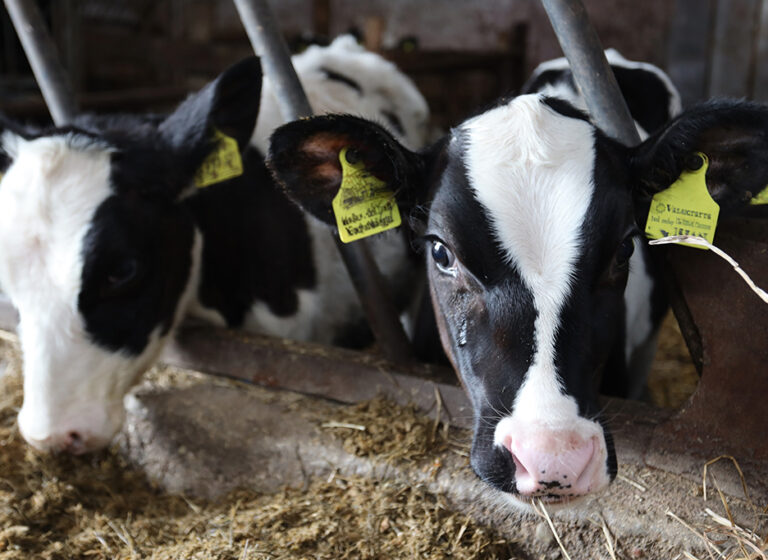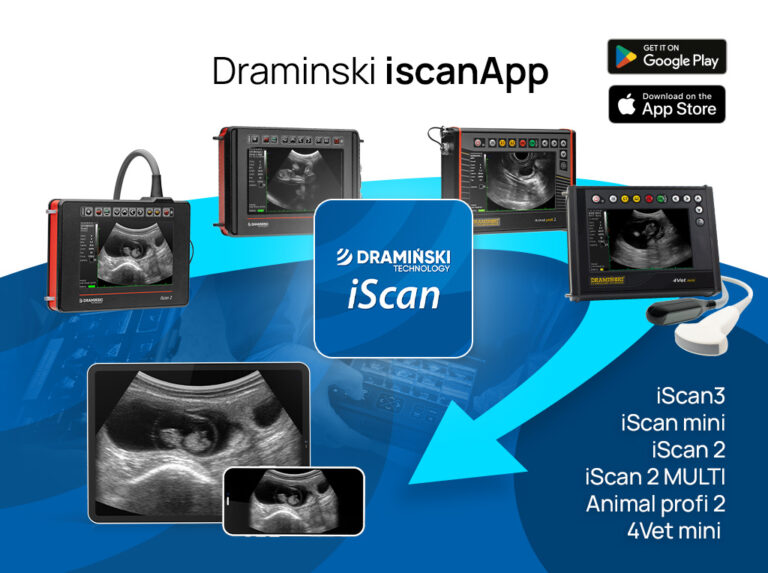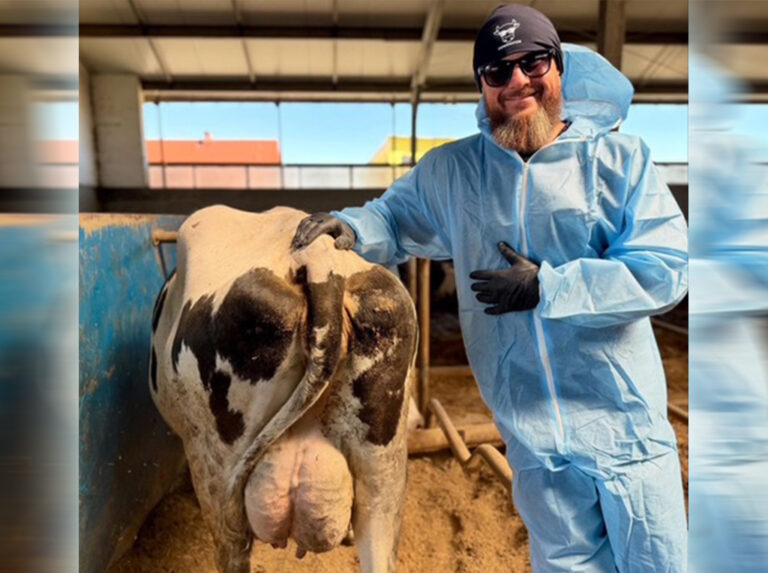BRD – Bovine Respiratory Disease
What it is, how to diagnose it, and how to treat it What is BRD? Bovine Respiratory Disease (BRD) is one of the most serious health challenges in calves and young cattle. It occurs most often in the first weeks after weaning, during transport, or when animals are exposed to major environmental changes. BRD is […]
Read more
What to Consider When Choosing an Ultrasound Machine for Field Work with Cows
Ultrasonography has become an indispensable tool for veterinarians specializing in cattle reproduction. Choosing the right ultrasound machine for fieldwork is an investment that directly affects diagnostic accuracy, work comfort, and farmer satisfaction. Not every device performs well in barn conditions, so it’s worth keeping several key criteria in mind. Mobility and durability are essential. Farm […]
Read more
Live ultrasound streaming now available on iScan 3, iScan mini, iScan 2, iScan 2 MULTI, Animal Profi 2, and 4Vet mini!
Thanks to the Draminski iscanApp, you can display the image shared from your ultrasound scanner on your phone or tablet. The app is compatible with devices running on Android and iOS systems. It is available for download on Google Play and the App Store. Now you can share your image not only from the […]
Read more
Uterine Prolapse in Cows (Prolapsus Uteri)
Uterine prolapse is an acute clinical condition that typically occurs within 24 hours after calving and poses a direct threat to the cow’s life. It requires immediate and skilled veterinary intervention under field conditions. If left untreated or managed improperly, it can lead to severe complications or even death. Pathophysiology Uterine prolapse involves complete eversion […]
Read more
New version of airScan app for iOS NOW available!
We’re excited to share that the latest version of the airScan app for iOS is now live and ready to download from the App Store. This update brings valuable new features and usability enhancements to streamline diagnostics and daily workflow. Here’s what’s new in this release: 🔹 Follicle Measurement A brand-new feature designed to assist […]
Read more
Mycotoxins in Grain – A Silent Threat to Dairy Cows’ Health and Feed Quality
Mycotoxins are toxic chemical compounds produced by mold fungi, mainly from the genera Fusarium, Aspergillus, and Penicillium. They most commonly appear in grains that have been exposed to moisture and heat—both during the growing season and during storage. In dairy cows especially, the presence of mycotoxins can lead to: • reduced appetite and decreased milk production, • digestive problems […]
Read more
What’s New in the Dramiński airScan App for iOS
We’re excited to announce the release of the latest version of the Dramiński airScan app for iOS devices. This update introduces a range of enhancements designed to significantly improve usability and expand the functionality of the ultrasound system. 1. Full Control of Imaging Settings via Probe Keyboard and Mobile Screen You can now manage all imaging parameters […]
Read more
Mastitis in Dairy Cows – How to Spot, Treat, and Prevent Udder Inflammation
Mastitis, or udder inflammation, is one of the most common and costly health issues in dairy farming. It particularly affects high-yielding cows and can lead to serious financial and health-related losses. In this article, we’ll take a closer look at what mastitis is, how to recognize it, treat it effectively, and most importantly – how […]
Read more
Foot-and-Mouth Disease – A Serious Threat to Livestock
Foot-and-mouth disease (Aphthae epizooticae) is a highly contagious viral illness that affects cloven-hoofed animals such as cattle, pigs, sheep, and goats. Caused by a virus from the Picornaviridae family, the disease poses a major threat to animal health and has severe economic and epidemiological consequences. Outbreaks require immediate isolation of infected animals and the enforcement of strict […]
Read more










